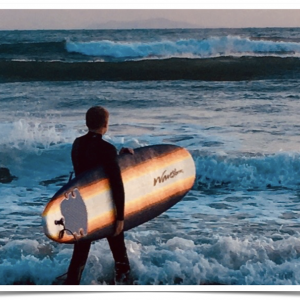Greenwich Village has always been a center for expression, and an oasis for art, music, and culture. It was once considered the "Bohemian Capital" due to its citizens who practiced "unconventional" lifestyles in the 19th century. It is home to the 1960's counterculture movement and the birthplace of the Gay Rights Movement. Many protests occurred here, inclusing the protest against the Vietnam War. During the 1960's, several abstract expressionists resided here including Andy Warhol, and singer Lou Reed.
Greenwich Village is a historical hub for gay life and is arguably considered one of the "gayest" neighborhoods of New York City. During the mid 20th century (and before), members of the LGBTQ+ community had very few places where they could be their true selves, often keeping their gender and sexual identities hidden. There were some refuges, like the Stonewall Inn inside of Greenwich Village, where members of the LGBTQ+ community could be...
more
 This class will teach you how to surf (the Internet) and about the various ways that English studies have been transformed over the last few decades. Starting with some basic close-reading and analysis skills (aided by annotation at COVE Studio), we will then explore how those skills have been increasingly applied to new areas of inquiry (tv, film, culture, critical theory, and politics). Throughout, we will employ new digital tools that change the way we approach our subjects of inquiry, including Web annotation, timeline-building, gallery-building and GIS mapping. As we proceed, we will consider the nature of English studies: What is an English department and how does it relate to the rest of the university? What can you do with an English degree? Why is it necessary to fight for English in an increasingly STEM-oriented world?
This class will teach you how to surf (the Internet) and about the various ways that English studies have been transformed over the last few decades. Starting with some basic close-reading and analysis skills (aided by annotation at COVE Studio), we will then explore how those skills have been increasingly applied to new areas of inquiry (tv, film, culture, critical theory, and politics). Throughout, we will employ new digital tools that change the way we approach our subjects of inquiry, including Web annotation, timeline-building, gallery-building and GIS mapping. As we proceed, we will consider the nature of English studies: What is an English department and how does it relate to the rest of the university? What can you do with an English degree? Why is it necessary to fight for English in an increasingly STEM-oriented world?